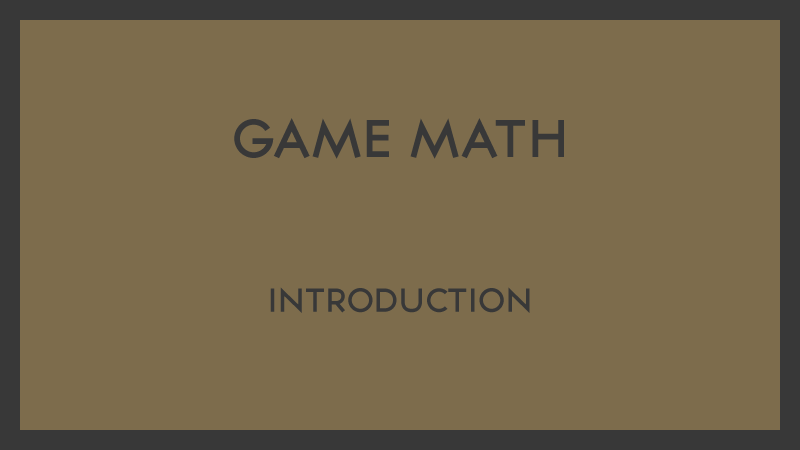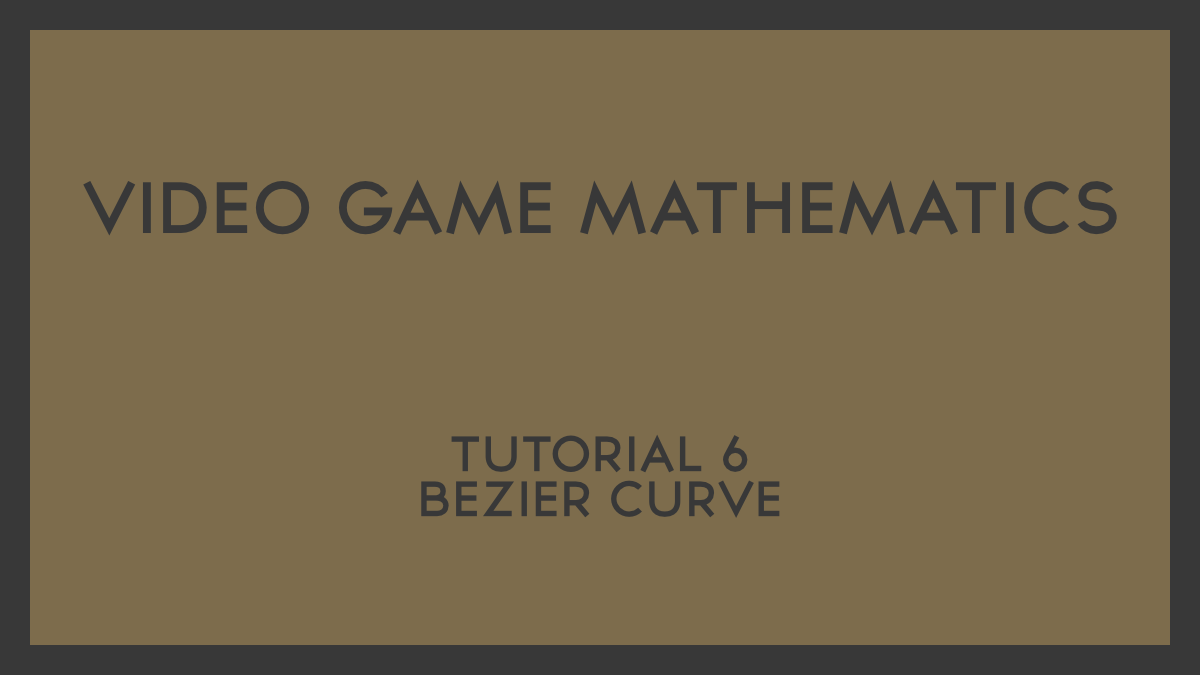Welcome to a new and exciting series covering Game Math! This series will cover mathematics and physics related to game developers. We will be focusing on 2D for now, but we will get to 3D later.


This is the second tutorial of Game Math! In this tutorial, I discuss rectangles and rectangular collision detection. The most common operation that you will use to detect collision detection is rectangular collision detection. Once that succeeds, you can use more complex collision detection like Per-Pixel collision detection.

In this tutorial, I discuss rectangles and per-pixel collision detection. I also take things a step farther and discuss getting an intersecting rectangle and using that to optimize the algorithm. Since this algorithm loops through every pixel, it is recommended to use rectangular collision detection before per-pixel collision.

This is the fourth tutorial of Game Math! In this tutorial, I discuss the mathematics being matrix transformations. I also discuss how to represent a 2D vector as a 1x4 matrix.

This is the fifth tutorial of Game Math! In this tutorial, I discuss the mathematics behind vector reflection. Vector reflection is a necessary process if you want to have your game object bounce off another object or a wall.

This is the sixth tutorial of Game Math! In this tutorial, I discuss the mathematics behind Bezier curves. These types of curves are necessary in order to create complex paths for game objects to travel.


This is the very first tutorial of Game Math! In this tutorial, I discuss vectors and vector math that will help during game development. The most common operation that you will use is building a vector from your object's speed and angle.
View the PDF tutorial made in 2009